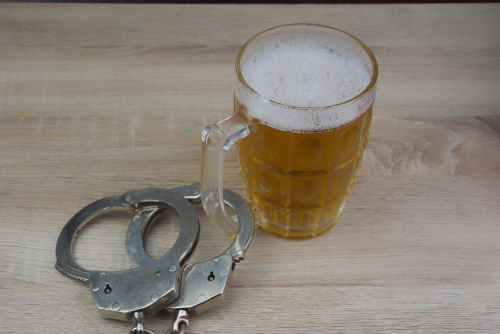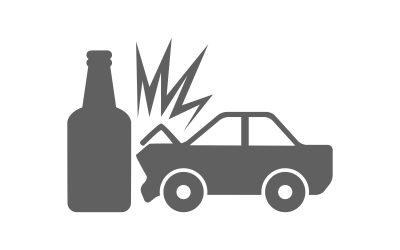According to the Virginia Department of Motor Vehicles (DMV), alcohol-related driving fatalities have decreased by 37% in the last 30 years. While that’s good news, you still have a 1 in 6 chance of being involved in an alcohol-related driving accident over the course of your life as a resident of the Commonwealth. Alcohol-related simply means one or both drivers had some level of alcohol in their system at the time of the crash.
The DMV also reports that:
- In 2018, 34% of all traffic fatalities in Virginia were alcohol-related; that means of the 819 traffic fatalities in 2018, 278 of those people died in alcohol-related crashes.
- 19,790 people were convicted of DUI in Virginia in 2018
- A DUI in Virginia could cost you $5,000 and $20,000
Like every other state, you can be charged with DUI if your blood alcohol content (BAC) is .08 or higher. Drivers under the age of 21 can be charged with illegal alcohol consumption if the BAC is between .02 and .08.
What Changed in 2012
Virginia has some of the toughest drunk driving laws in the country. But that was not always the case. In July 2012, a new law went into effect, designed to prevent drunk driving in the first place, as well as to discourage a second offense. The new law got tough on first-time offenders, by mandating that any first time DUI offender must have a certified ignition interlock device (IID) installed in your vehicle before you can start driving again.
Furthermore, the IID restriction is mandatory for a period of at least six months, and you can’t have any alcohol violations during that period. Previously, the law required IIDs only for first-time offenders with a high blood alcohol content (BAC) of 0.15 or higher and for second and subsequent DUIs.
Even for a first time DUI, you will lose your driver’s license for a year and have a mandatory ignition interlock device when you begin driving with a restricted license. A second conviction results in a three-year driver’s license suspension, and 20 days in jail is required for a third conviction within five years.
Drunk Driving Fatalities Still Increasing
Even with these tougher consequences for drunk drivers, drunk driving fatalities are increasing. According to the DMV crash statistics for 2018,
- Alcohol-related fatalities increased by 12.1% over 2017.
- Of the 278 people who died in alcohol-related crashes in 2018, 63%, or 177 of those were drinking drivers.
- 13 of those killed were non-drinking drivers.
- 43 of those killed were passengers, while 44 were pedestrians.
- DUI convictions increased by 5.8% from 2017 to 2018.
- More than two-thirds of those convicted of DUI were male.
- The vast majority of drinking drivers were between the ages of 21 and 40.
- The average BAC for tested drinking drivers was .147, nearly twice the legal limit.
The good news is that alcohol-related crashes decreased by 1.4% in 2018, as compared to 2017. So that is most definitely a bright spot that lawmakers and law enforcement hope to build upon.
Harsher DUI Penalties for 2020
If you drink and drive and seriously injure someone in Virginia, you will face harsher criminal penalties in 2020. A new law (HB1941) increases the offense of drunk driving that causes permanent and significant impairment to another from a class 6 felony to a class 4 felony, which comes with 2 to 10 years of prison time. The law also creates a class 6 felony for drunk driving that causes serious bodily injury which is not permanently disabling.
With Virginia being a coastal state with many waterways, the same penalties apply for someone who operates a watercraft while drinking and causes the same severe injuries.
Schedule Ignition Interlock Device Installation
If you’ve been convicted of a DUI and have received a restricted driver’s license, you have 30 days to get your ignition interlock device installed. You cannot legally drive until you have the IID installed. So don’t delay — call the ALCOLOCK installation location nearest to you, or call us directly at (866) 700-9300. You’ll want to have your paperwork with you when you call, so we can confirm your eligibility. In most cases, we can schedule your installation within 2 days of your call.
You should plan on having someone drive you to your installation appointment, as you cannot legally drive until the device is installed. Your appointment should take about an hour, which includes the installation of the device, and training you in how to use it properly.



